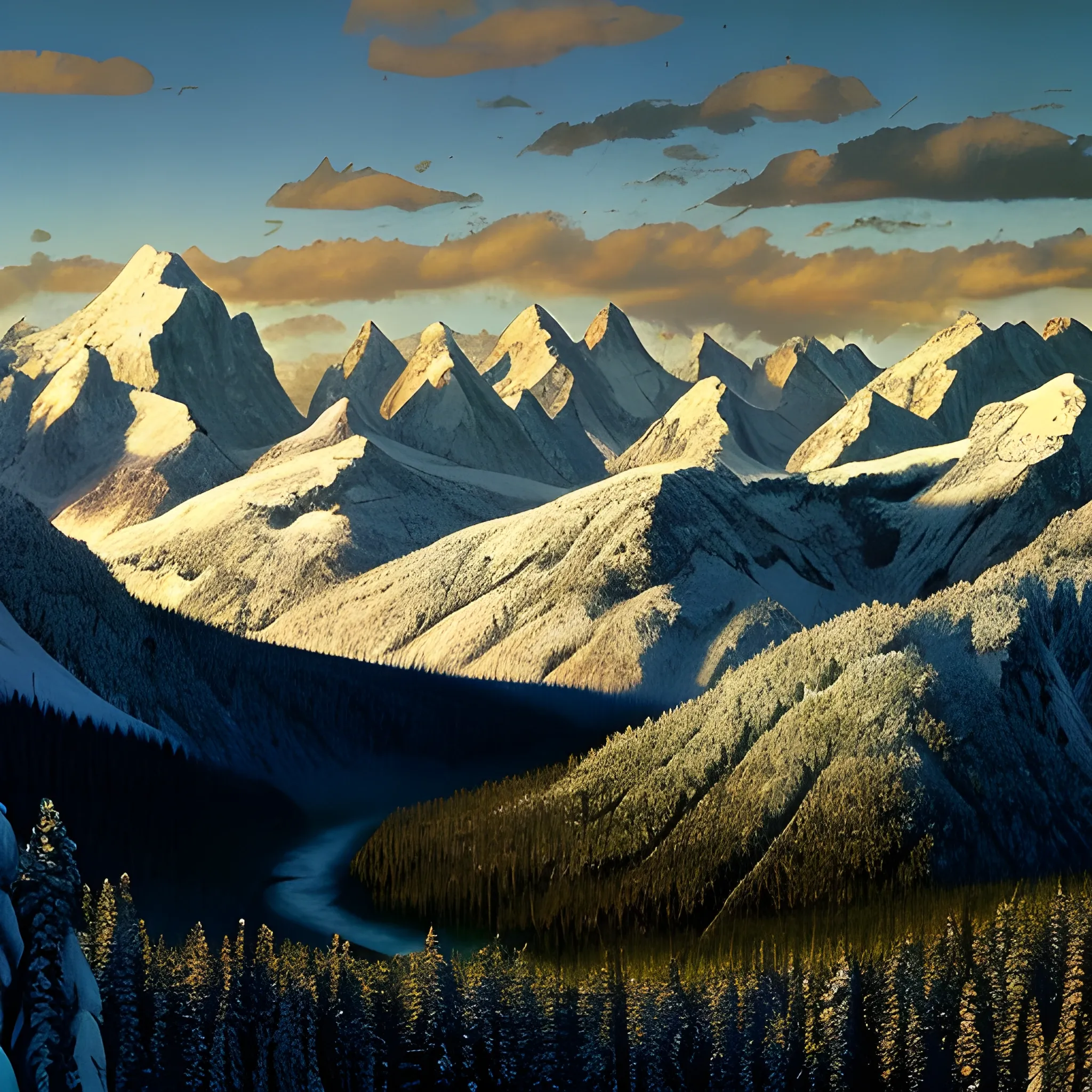Search Results for wilderness
Explore AI generated designs, images, art and prompts by top community artists and designers.
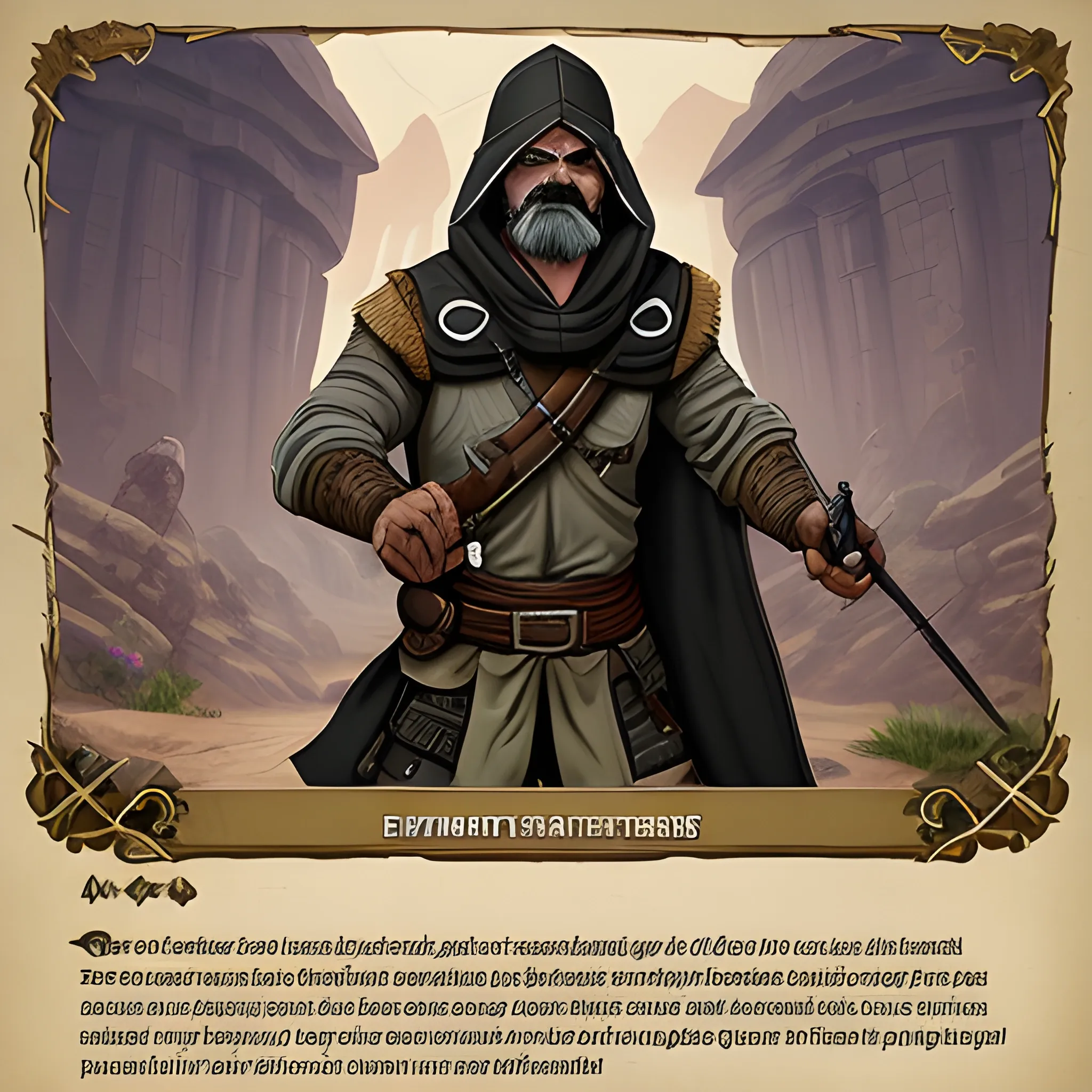
Appearance: The Bandit Leader is a commanding figure , exuding an air of authority and charisma that sets them apart from the ordinary members of their gang. They dress in more elaborate and well-maintained clothing , often adorned with stolen jewelry or symbols of power. Their attire may be a mix of practicality and ostentation , showing off their wealth and status while ensuring they can move freely in combat. The Bandit Leader may have a distinctive and fearsome appearance , with battle scars or an imposing physical presence that demands respect from their followers. Features: The Bandit Leader is not only a skilled fighter but also a cunning strategist. They possess tactical knowledge , able to plan and execute ambushes and raids with precision. The Bandit Leader is usually armed with high-quality weapons , whether a finely crafted sword or a specially customized bow. Their combat skills and combat prowess make them a formidable adversary in one-on-one combat , and they often lead from the front during raids. Habitat: The Bandit Leader's territory is typically a well-hidden and fortified stronghold , strategically chosen to offer both defense and escape routes. These hideouts may be deep in the wilderness , atop rocky cliffs , or concealed in dense forests. In your DND world , the Bandit Leader might operate from a secluded fortress , a smuggler's den , or even from within the heart of a city , using their influence to conceal their true identity. Behavior: The Bandit Leader is a cunning and ambitious individual , driven by a desire for wealth , power , and control. They are ruthless in their pursuit of dominance , often betraying or eliminating rivals to consolidate their position. The Bandit Leader can be charismatic and manipulative , skilled at inspiring loyalty among their followers through promises of riches and protection. However , they are also quick to punish those who fail them or show any signs of disloyalty. Role in the World: In your DND world , the Bandit Leader serves as the central antagonist to adventurers seeking to thwart criminal activity and restore law and order. They may be the head of a notorious bandit gang , a powerful crime lord with influence over multiple territories , or a charismatic rebel leader opposing a tyrannical regime. Encountering the Bandit Leader in your campaign can be a climactic and high-stakes event , representing the culmination of the adventurers' efforts to confront criminal activity and protect innocent lives. The Bandit Leader's defeat might serve as a major turning point in the campaign , leading to the dismantling of the gang or the exposure of a larger conspiracy. The presence of a Bandit Leader in your campaign world adds an element of intrigue and danger to the setting. Players will need to gather information , form alliances , and carefully plan their approach when confronting such a formidable foe. Engaging with the Bandit Leader and their gang can create thrilling and memorable encounters , providing players with opportunities for cunning negotiation , daring heists , and epic battles that will shape the course of your DND world's history ,
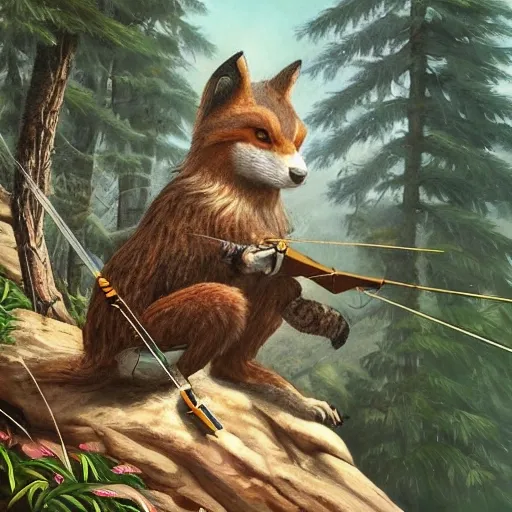
Vulpin Graywind , the nature-bound ranger , is a slender and agile adventurer of medium build. His silky , dark brown hair falls wild and curly around his striking face , reaching down to his shoulders. His eyes have an intense emerald green color that reflects his connection to the natural world. His sun-kissed skin bears the traces of numerous wilderness adventures. Vulpin's face showcases gentle yet distinct features that convey his confidence and determination. A light , unkempt beard frames his chin , adding a rugged charm to his appearance. Vulpin wears practical yet elegant attire suited for the wilderness. He has chosen a lightweight leather armor adorned with natural colors and patterns. On his back , he carries a well-stocked backpack filled with survival gear that is always within reach. His movements are graceful and powerful as he traverses the wilderness. Vulpin is a master of archery and always keeps his crossbow at the ready to deliver precise shots from a distance. His hands are adorned with his faithful set of knuckle dusters , enabling him to unleash quick and accurate strikes in close combat. Vulpin Graywind exudes an aura of wildness and attunement to nature. His eyes brim with determination as he confronts the challenges of the adventurous world. , Oil Painting ,
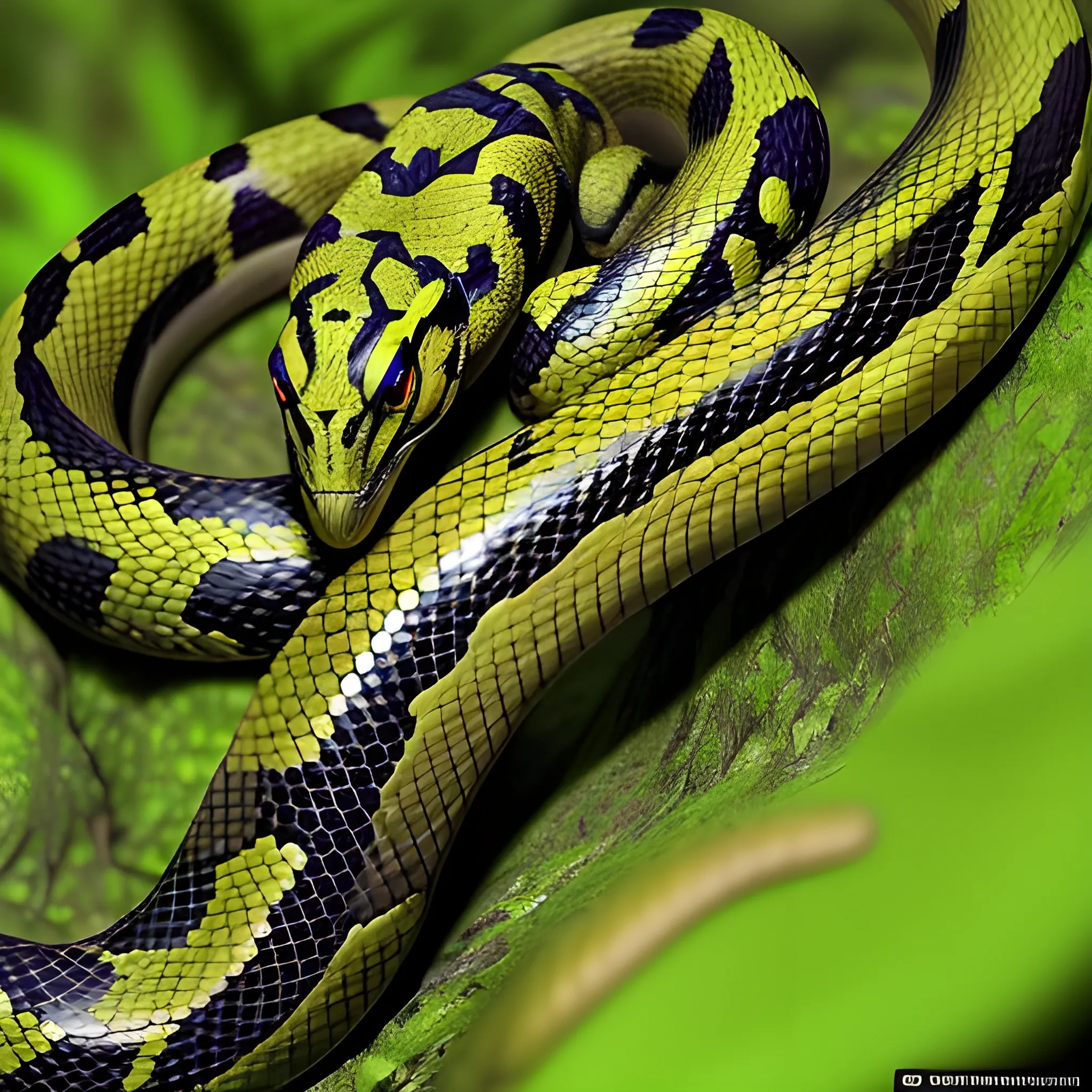
Appearance: The Poisonous Snake is a small to medium-sized reptile with a slender body and a distinctive pattern of scales. Its colors can vary widely , from vibrant and striking patterns to more muted earth tones , helping it blend into its natural surroundings. The snake's head is triangular , and it has a pair of fangs at the front of its mouth , through which it delivers its venom. Features: The Poisonous Snake is known for its venomous bite , which it uses to incapacitate its prey and defend itself from threats. Its venom can vary in potency , from causing mild discomfort to being deadly , depending on the species. While not as powerful as the venom of more dangerous creatures , the Poisonous Snake's bite can still cause considerable harm to unwary adventurers. Habitat: Poisonous Snakes can be found in a wide range of environments , from dense jungles and forests to dry deserts and grasslands. They are highly adaptable creatures and can thrive in various conditions , making them a common sight in untamed wilderness areas. Behavior: The Poisonous Snake is a stealthy predator , relying on its camouflage and patience to ambush its prey. It strikes quickly and accurately , using its venom to immobilize and begin the process of consuming its victim. Poisonous Snakes are generally non-aggressive towards larger creatures , preferring to flee rather than confront a potential threat. Role in the World: In your DND world , Poisonous Snakes could serve as common dangers in the wild , particularly in regions where adventurers explore untamed territories. Druids and rangers might have a connection with these creatures , viewing them as part of the natural balance. Encountering a Poisonous Snake in the wild can be a common and potentially hazardous event for adventurers. While they are generally not aggressive , they may strike if they feel threatened or cornered. Players might need to exercise caution and use skills such as animal handling or survival to avoid confrontations with these venomous reptiles. If adventurers do find themselves bitten , they must act quickly to counteract the effects of the venom and avoid more serious consequences. The presence of Poisonous Snakes in your campaign adds an element of realism and danger to the wilderness. Players will need to be vigilant and watchful during their travels , as the risk of encountering these venomous creatures is ever-present. Poisonous Snakes can also serve as a minor but meaningful challenge , especially for lower-level adventurers , teaching them the importance of preparation and awareness in the untamed wilderness. ,

Appearance: The Giant Poisonous Snake is a massive and fearsome reptile , much larger than its smaller counterpart. It has a thick and muscular body , and its scales can have a range of colors , from mottled greens and browns to striking patterns that allow it to blend in with its surroundings. The snake's head is large and triangular , with a pair of long , hollow fangs through which it delivers its potent venom. Features: The Giant Poisonous Snake is known for its deadly venomous bite , which it uses to incapacitate and devour prey. Its venom is significantly more potent than that of its smaller cousin , making it a formidable threat to adventurers. A bite from a Giant Poisonous Snake can cause severe pain , paralysis , or even death , depending on the creature's size and resilience. Habitat: Giant Poisonous Snakes typically inhabit dense jungles , dark swamps , and other untamed wilderness areas. They prefer warm and humid environments and may be found in hidden lairs or lurking near water sources. In your DND world , they could guard sacred sites or serve as minions of malevolent beings. Behavior: Like their smaller counterparts , Giant Poisonous Snakes are stealthy predators , using their large size and camouflage to ambush prey. They strike swiftly and accurately , delivering their venom to immobilize their victims before consuming them. While generally non-aggressive , they may attack if they feel threatened or if potential prey ventures too close. Role in the World: In your DND world , Giant Poisonous Snakes could be apex predators in their habitat , feared and respected by other creatures. They might be associated with ancient legends or guarded by nature spirits. Druids and rangers might view them as symbols of balance and the wild's dangers. Encountering a Giant Poisonous Snake in the wild is a perilous and potentially deadly event for adventurers. The snake's venomous bite can have severe consequences , making quick thinking and decisive action essential to survive an encounter. Players must be well-prepared with protective spells , antidotes , or other means to counteract the venom's effects. The presence of Giant Poisonous Snakes in your campaign can create an atmosphere of danger and suspense , particularly in jungles or other untamed regions. Players will need to be vigilant and cautious during their explorations , as the looming threat of these massive venomous serpents adds an element of peril to their adventures. Giant Poisonous Snakes can serve as significant challenges for higher-level adventurers , reminding them of the dangers that still lurk even in seemingly familiar environments. ,

Young European girl , light-colored long hair , RV window seat , quietly sleeping , lying down , comfortable clothing , head leaning against the window , calm and peaceful expression , eyes closed , dim and cold weather , very cloudy sky , raining , condensation or dew on the window , wilderness or forest background , realistic 3D effect , rich in detail , sense of tranquility and coldness , overcast sky , dark and gloomy lighting , ominous weather , looks comfortable , not too thin , body posture indicating coldness , not too monotonous in color , dark blue blanket , cozy and comfortable atmosphere , soft lighting , gray knit hat Negative keywords: deformed fingers , unnatural posture , unrealistic facial features , blurry details , pixelation , poor lighting , flat textures , low resolution , excessive brightness , distorted proportions , unnatural shadows , mismatched colors , artificial look , noise , artifacts , uncoordinated body , awkward positioning , stiff movements , unnatural body alignment , 3D , HD ,

Appearance: The Constrictor Snake is a long and powerful reptile , known for its impressive ability to squeeze and suffocate its prey. It typically has a slender and muscular body , covered in scales that can vary in color from dull brown and green to vibrant patterns. Constrictor snakes have sharp , recurved teeth designed to grip and hold their prey as they constrict it. They are typically non-venomous and rely on their powerful constriction to subdue their victims. Features: The Constrictor Snake is a stealthy predator , relying on its keen senses to locate prey and ambush it. Its long , forked tongue allows it to taste the air and track potential food sources. Once it catches its prey , the snake coils around it , using its powerful muscles to squeeze and immobilize it. This method of hunting allows the snake to subdue prey larger than its mouth , as it doesn't need to swallow the victim whole. Habitat: Constrictor Snakes are found in a wide range of environments , from dense jungles and swamps to arid deserts and grasslands. They prefer warm climates and can be active both during the day and at night. In your DND world , they might inhabit untamed wilderness areas or hidden lairs , waiting for prey to pass by. Behavior: Constrictor snakes are generally solitary creatures , except during mating season. They are non-aggressive toward larger creatures , preferring to avoid confrontation when possible. When hunting , they rely on stealth and patience to surprise their prey. Their constriction technique is highly effective , allowing them to overpower and devour a variety of creatures. Role in the World: In your DND world , Constrictor Snakes could be a common predator in certain regions , often preying on small to medium-sized creatures. Druids and rangers might have a connection with these snakes , viewing them as symbols of balance in the natural world. Encountering a Constrictor Snake in the wild could be a challenging and potentially dangerous situation for adventurers. While they are not typically aggressive toward larger creatures , they may perceive humanoids as potential threats if they feel cornered or provoked. Players might need to exercise caution and use appropriate skills , such as animal handling or survival , to safely navigate through areas where these snakes are known to dwell. If adventurers find themselves facing a Constrictor Snake , they must be prepared for a battle of strength and wits , as the snake's constricting abilities can be deadly if not dealt with carefully. ,
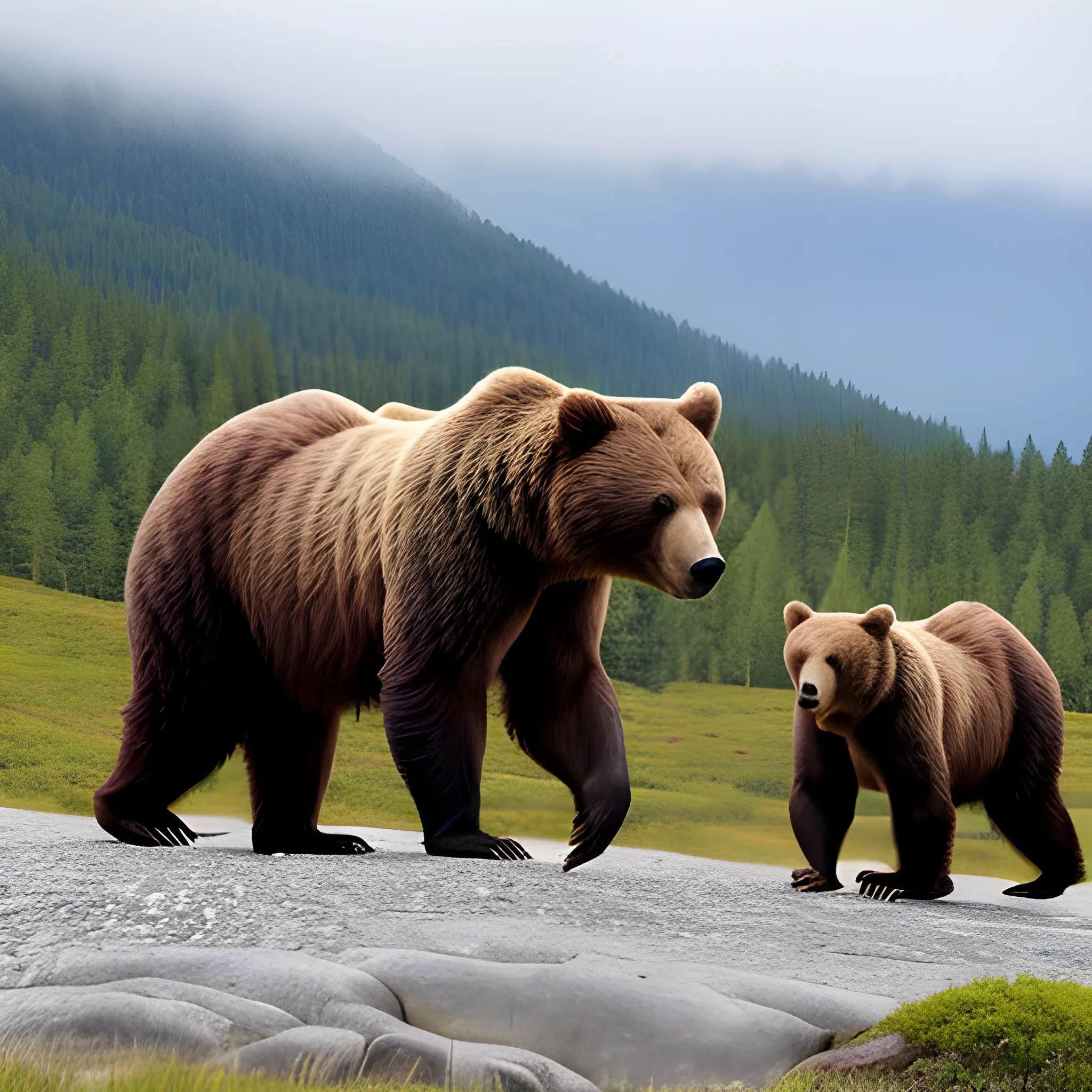
Appearance: The brown bear is a large and powerful creature , often considered the embodiment of strength and ferocity. It has a distinctive hump of muscle on its shoulders , which sets it apart from other bear species. Despite its name , the brown bear's fur can vary significantly in color , ranging from light brown to dark brown , and even shades of blonde or reddish-brown. Some individuals may have a lighter-colored face , creating a "grizzled" appearance , while others have a more uniform coloration throughout their body. Features: Brown bears are well-adapted for survival in various environments. They have strong limbs with sharp claws , which they use for digging , climbing , and catching prey. Their jaws are equipped with formidable teeth that can crush bones and tear through flesh. Adult brown bears can stand around 6 to 10 feet tall when on their hind legs , and their weight ranges from 400 to 1 , 500 pounds , with males being significantly larger than females. Habitat: Brown bears are versatile creatures , capable of inhabiting a wide range of habitats. They can be found in dense forests , grasslands , tundra , and mountainous regions. In your DND world , they might be common inhabitants of rugged wilderness areas , guarding their territories and foraging for food. Behavior: Brown bears are generally solitary animals , except during the breeding season or when a mother is caring for her cubs. They are omnivorous , having a diverse diet that includes berries , fruits , fish , insects , small mammals , and even carrion. Their intelligence and resourcefulness enable them to adapt to different food sources based on the season and availability. Role in the World: In your DND world , brown bears could play a significant role in the ecosystem. They might be seen as the apex predators of certain regions , balancing the population of prey animals and ensuring the health of the natural environment. Druids and rangers could have a special connection with brown bears , viewing them as symbols of the wild and protectors of nature. Encountering a brown bear in the wilderness could be a thrilling and potentially dangerous experience for adventurers. These formidable creatures are generally not aggressive toward humans , but they may become defensive if they feel threatened or if their territory is encroached upon. Adventurers might have opportunities to peacefully observe brown bears from a distance or use animal handling skills to avoid conflict. However , provoking or attacking a brown bear could lead to a fierce and challenging battle , as they are capable of inflicting significant damage with their powerful claws and jaws. ,
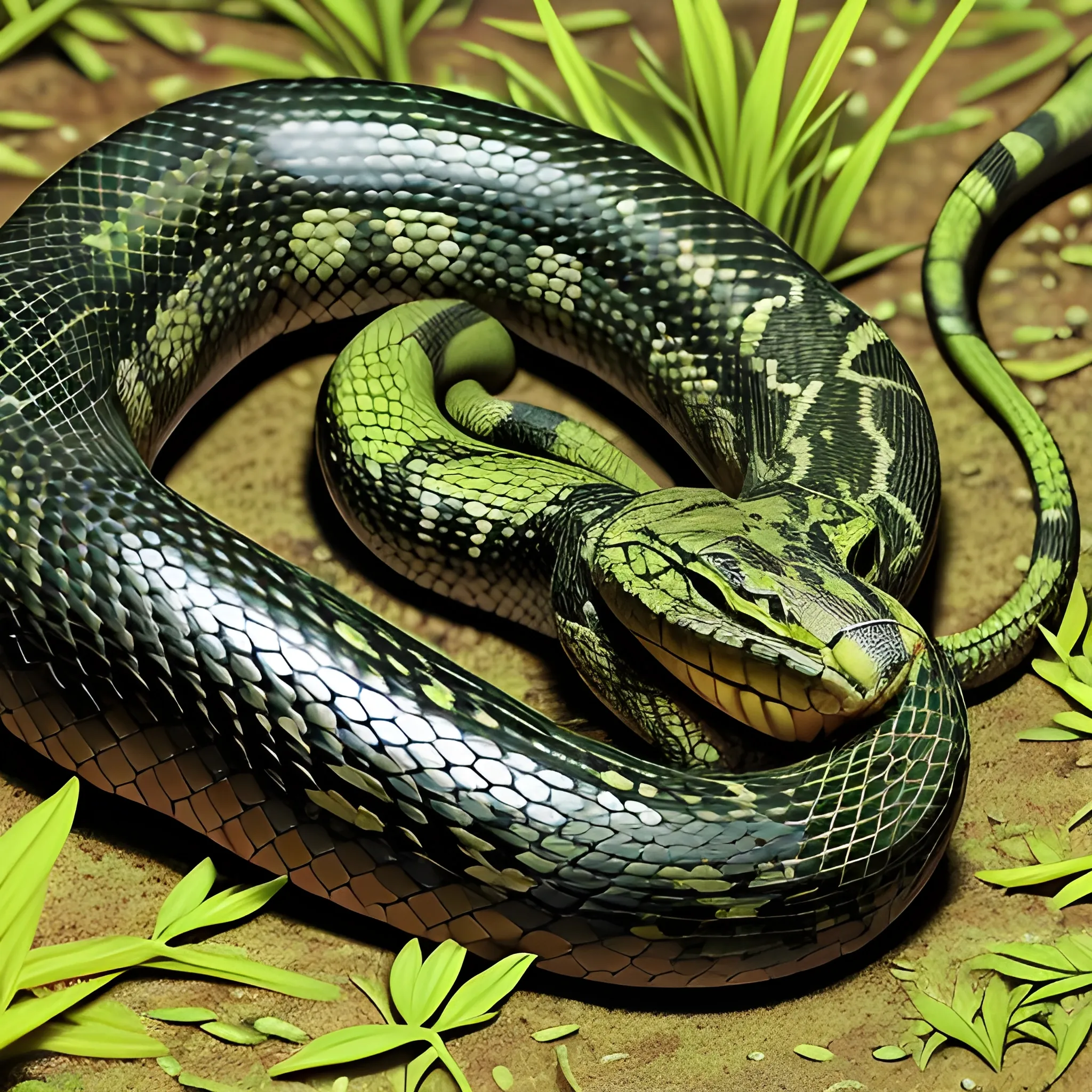
Appearance: The Poisonous Snake is a small to medium-sized reptile with a slender body and a distinctive pattern of scales. Its colors can vary widely , from vibrant and striking patterns to more muted earth tones , helping it blend into its natural surroundings. The snake's head is triangular , and it has a pair of fangs at the front of its mouth , through which it delivers its venom. Features: The Poisonous Snake is known for its venomous bite , which it uses to incapacitate its prey and defend itself from threats. Its venom can vary in potency , from causing mild discomfort to being deadly , depending on the species. While not as powerful as the venom of more dangerous creatures , the Poisonous Snake's bite can still cause considerable harm to unwary adventurers. Habitat: Poisonous Snakes can be found in a wide range of environments , from dense jungles and forests to dry deserts and grasslands. They are highly adaptable creatures and can thrive in various conditions , making them a common sight in untamed wilderness areas. Behavior: The Poisonous Snake is a stealthy predator , relying on its camouflage and patience to ambush its prey. It strikes quickly and accurately , using its venom to immobilize and begin the process of consuming its victim. Poisonous Snakes are generally non-aggressive towards larger creatures , preferring to flee rather than confront a potential threat. Role in the World: In your DND world , Poisonous Snakes could serve as common dangers in the wild , particularly in regions where adventurers explore untamed territories. Druids and rangers might have a connection with these creatures , viewing them as part of the natural balance. Encountering a Poisonous Snake in the wild can be a common and potentially hazardous event for adventurers. While they are generally not aggressive , they may strike if they feel threatened or cornered. Players might need to exercise caution and use skills such as animal handling or survival to avoid confrontations with these venomous reptiles. If adventurers do find themselves bitten , they must act quickly to counteract the effects of the venom and avoid more serious consequences. The presence of Poisonous Snakes in your campaign adds an element of realism and danger to the wilderness. Players will need to be vigilant and watchful during their travels , as the risk of encountering these venomous creatures is ever-present. Poisonous Snakes can also serve as a minor but meaningful challenge , especially for lower-level adventurers , teaching them the importance of preparation and awareness in the untamed wilderness. ,

a brawny figure , standing at a solid 6 feet tall with a muscular build that reflects years of wielding a heavy axe in the unforgiving wilderness. His once short-cropped brown hair has grown shaggy and unkempt , now mingling with a thick , wild beard that frames his face. His weathered skin bears the scars and marks of both his lumberjack days and the battles fought during the zombie apocalypse , giving him a rugged and battle-hardened appearance. Axel's eyes , once a calm shade of hazel , now gleam with a steely determination , hinting at the resilience that has seen him through the darkest days. Despite the wear and tear on his flannel shirt and denim jeans , Axel's physical prowess remains evident , showcasing the strength and agility that make him a formidable survivor in the post-apocalyptic landscape. , Cartoon , Pencil Sketch , Water Color ,
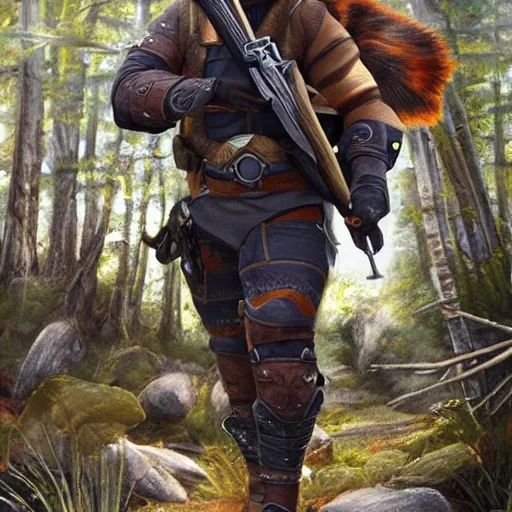
Vulpin Graywind is a slim and agile ranger. He has dark brown , curly hair that reaches his shoulders , and his eyes are a vibrant emerald green. Vulpin's skin is tanned from his time spent outdoors , and he sports a light , untidy beard that adds to his rugged appearance. He wears practical and stylish clothing suitable for the wilderness , including a lightweight leather armor with natural-colored patterns. Vulpin carries a well-equipped backpack on his back , always prepared for survival situations. His movements are fluid and powerful as he navigates through the wilderness. Vulpin is skilled with a crossbow , which he keeps handy for accurate long-range shots. He also wears a pair of knuckle dusters for swift and precise close-quarters combat. Vulpin Graywind's character and appearance reflect his strong connection to nature and his expertise in survival. , Oil Painting ,
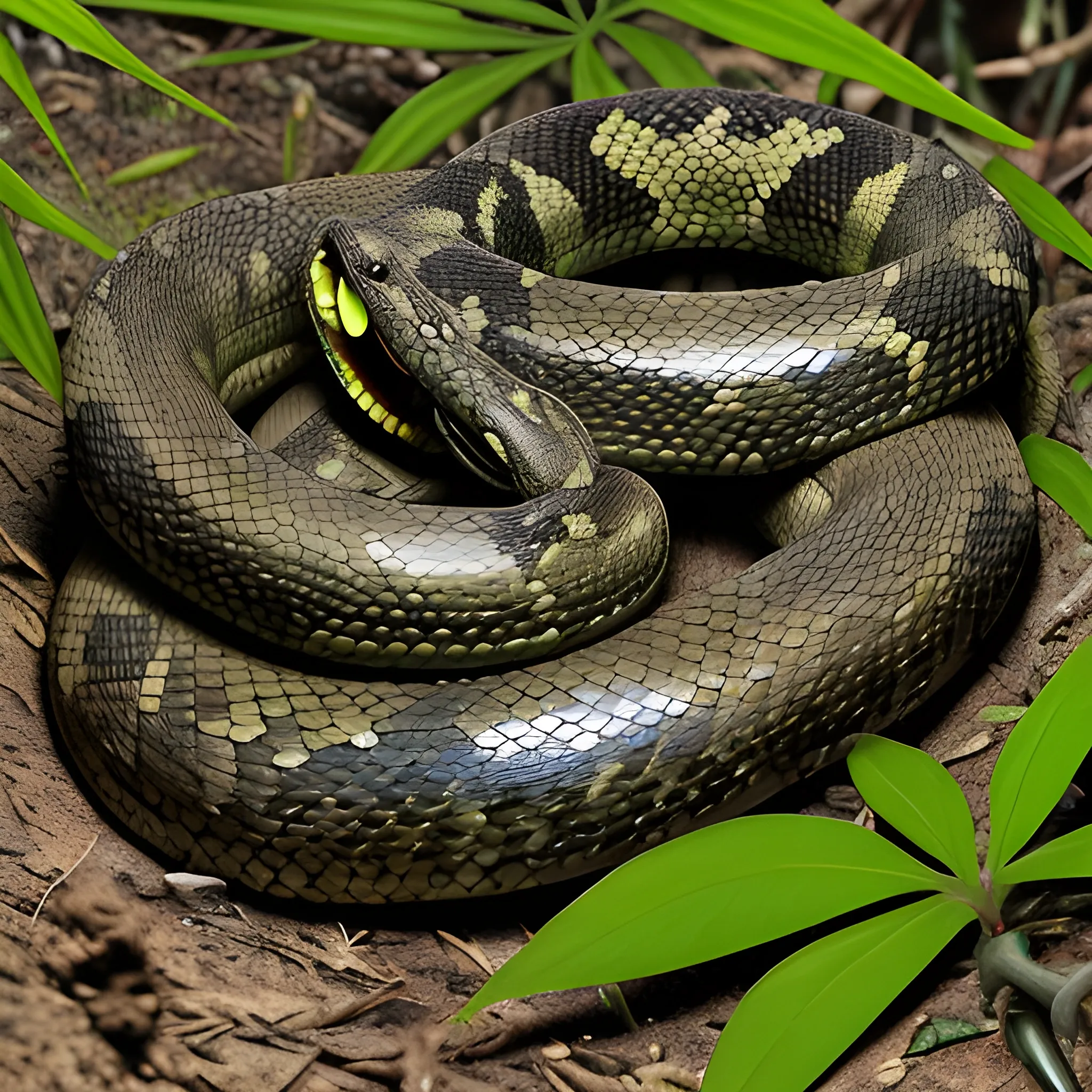
Appearance: The Poisonous Snake is a small to medium-sized reptile with a slender body and a distinctive pattern of scales. Its colors can vary widely , from vibrant and striking patterns to more muted earth tones , helping it blend into its natural surroundings. The snake's head is triangular , and it has a pair of fangs at the front of its mouth , through which it delivers its venom. Features: The Poisonous Snake is known for its venomous bite , which it uses to incapacitate its prey and defend itself from threats. Its venom can vary in potency , from causing mild discomfort to being deadly , depending on the species. While not as powerful as the venom of more dangerous creatures , the Poisonous Snake's bite can still cause considerable harm to unwary adventurers. Habitat: Poisonous Snakes can be found in a wide range of environments , from dense jungles and forests to dry deserts and grasslands. They are highly adaptable creatures and can thrive in various conditions , making them a common sight in untamed wilderness areas. Behavior: The Poisonous Snake is a stealthy predator , relying on its camouflage and patience to ambush its prey. It strikes quickly and accurately , using its venom to immobilize and begin the process of consuming its victim. Poisonous Snakes are generally non-aggressive towards larger creatures , preferring to flee rather than confront a potential threat. Role in the World: In your DND world , Poisonous Snakes could serve as common dangers in the wild , particularly in regions where adventurers explore untamed territories. Druids and rangers might have a connection with these creatures , viewing them as part of the natural balance. Encountering a Poisonous Snake in the wild can be a common and potentially hazardous event for adventurers. While they are generally not aggressive , they may strike if they feel threatened or cornered. Players might need to exercise caution and use skills such as animal handling or survival to avoid confrontations with these venomous reptiles. If adventurers do find themselves bitten , they must act quickly to counteract the effects of the venom and avoid more serious consequences. The presence of Poisonous Snakes in your campaign adds an element of realism and danger to the wilderness. Players will need to be vigilant and watchful during their travels , as the risk of encountering these venomous creatures is ever-present. Poisonous Snakes can also serve as a minor but meaningful challenge , especially for lower-level adventurers , teaching them the importance of preparation and awareness in the untamed wilderness. ,
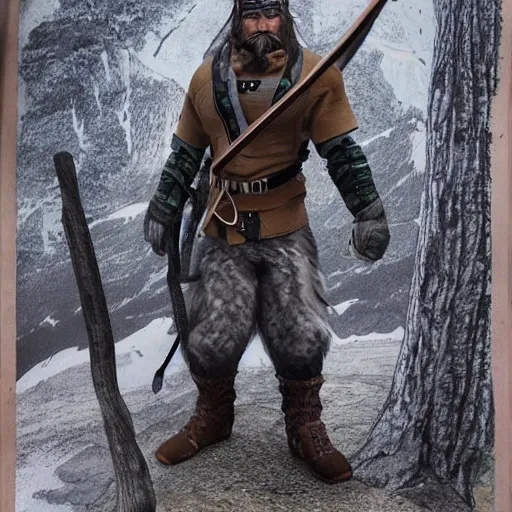
Vulpin Graywind , the nature-bound ranger , is a slender and agile adventurer of medium build. His silky , dark brown hair falls wild and curly around his striking face , reaching down to his shoulders. His eyes have an intense emerald green color that reflects his connection to the natural world. His sun-kissed skin bears the traces of numerous wilderness adventures. Vulpin's face showcases gentle yet distinct features that convey his confidence and determination. A light , unkempt beard frames his chin , adding a rugged charm to his appearance. Vulpin wears practical yet elegant attire suited for the wilderness. He has chosen a lightweight leather armor adorned with natural colors and patterns. On his back , he carries a well-stocked backpack filled with survival gear that is always within reach. His movements are graceful and powerful as he traverses the wilderness. Vulpin is a master of archery and always keeps his crossbow at the ready to deliver precise shots from a distance. His hands are adorned with his faithful set of knuckle dusters , enabling him to unleash quick and accurate strikes in close combat. Vulpin Graywind exudes an aura of wildness and attunement to nature. His eyes brim with determination as he confronts the challenges of the adventurous world. , Pencil Sketch ,
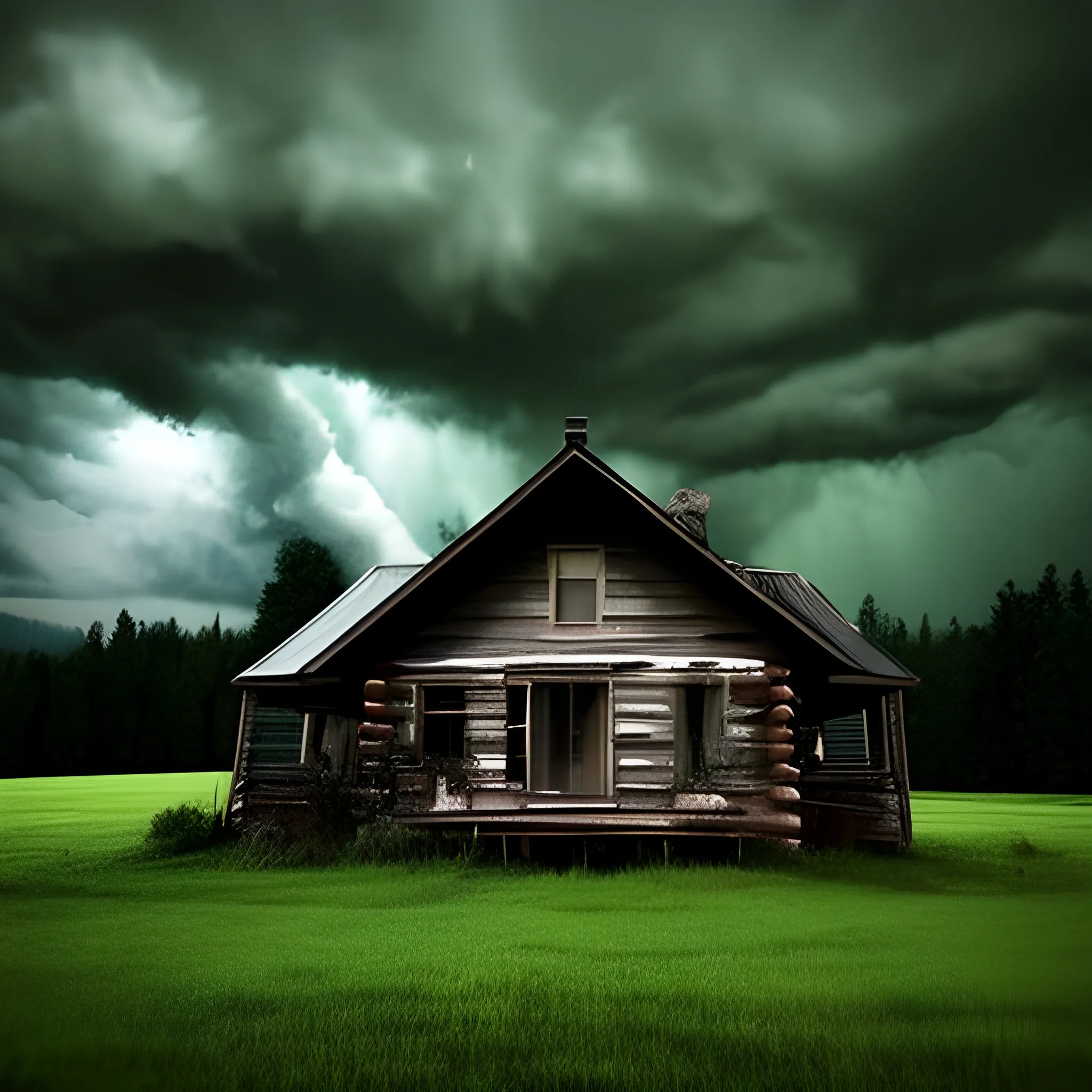
Close-up shot , night , dark weather , dark clouds , after-rain environment , no lights , American rural cabin , small house , small area house , green grass , dilapidated , wild , wilderness , real , 3D , ,
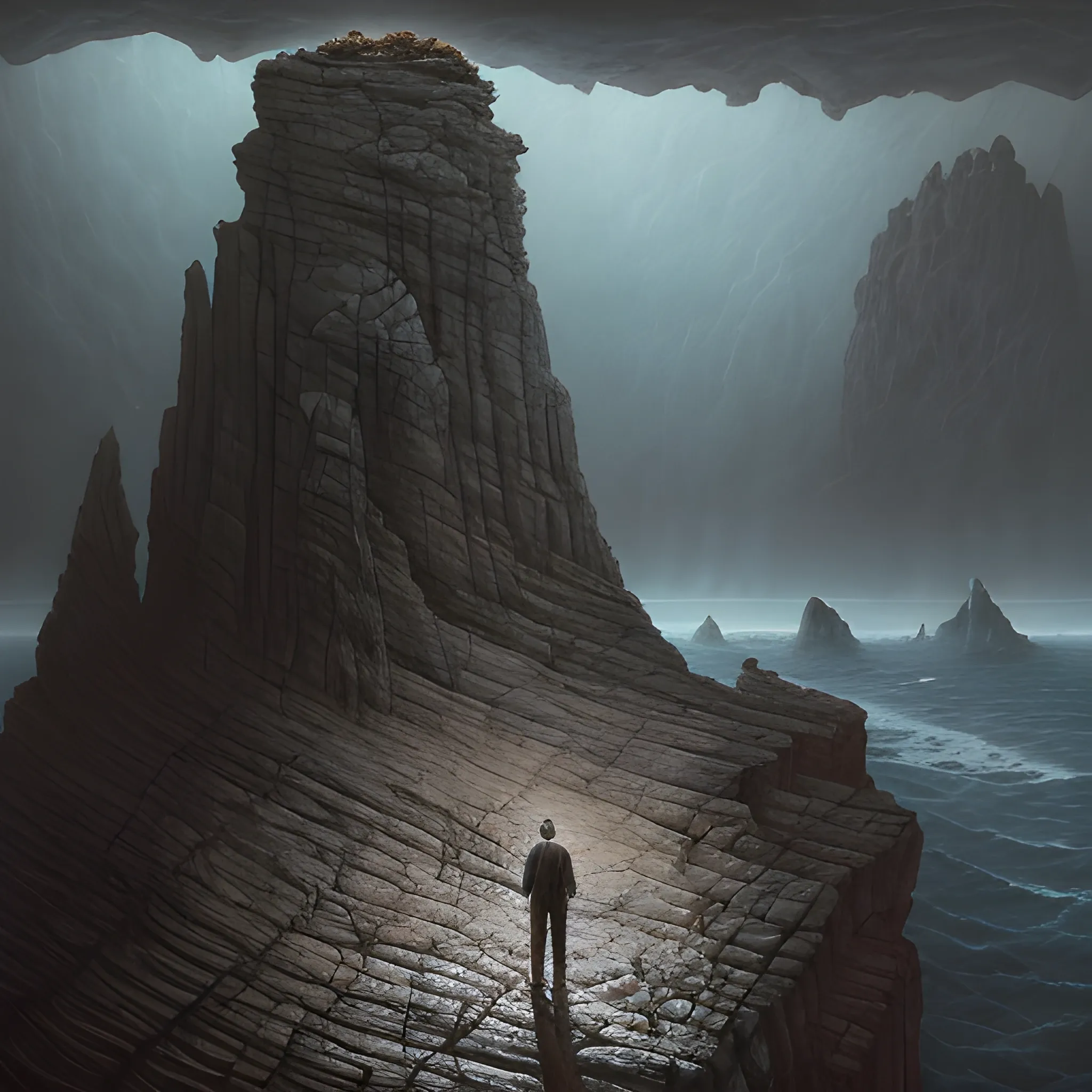
A man standing on a massive rocky cliff , surreal creatures lurking below , oil painting , detailed rock formation , mysterious atmosphere , high quality , surrealism , dark tones , dramatic lighting , detailed facial features , surreal creatures , wilderness , oil painting , dramatic shadows , rugged terrain , larger than life , eerie , highres , surreal , detailed ,

Expansive landscape photograph , (view from below with a view of the sky and the wilderness below) , Young Women standing in a flower field looking down , (full moon: 2.2) , (shooting star: 0.9) , (nebula: 2.8) , distant mountain , (warm light source: 1.2) , (firefly: 1.8) , lamp , orange and light blue , intricate detail , volume lighting BREAK (masterpiece: 1.2) , (highest quality ) , 4k , ultra-detailed , (dynamic configuration: 1.4) , highly detailed and colorful details (iridescent: 1.5) , (sparkling lighting , atmospheric lighting) , dreamy , magical , (solo: 1.2) , Oil Painting ,
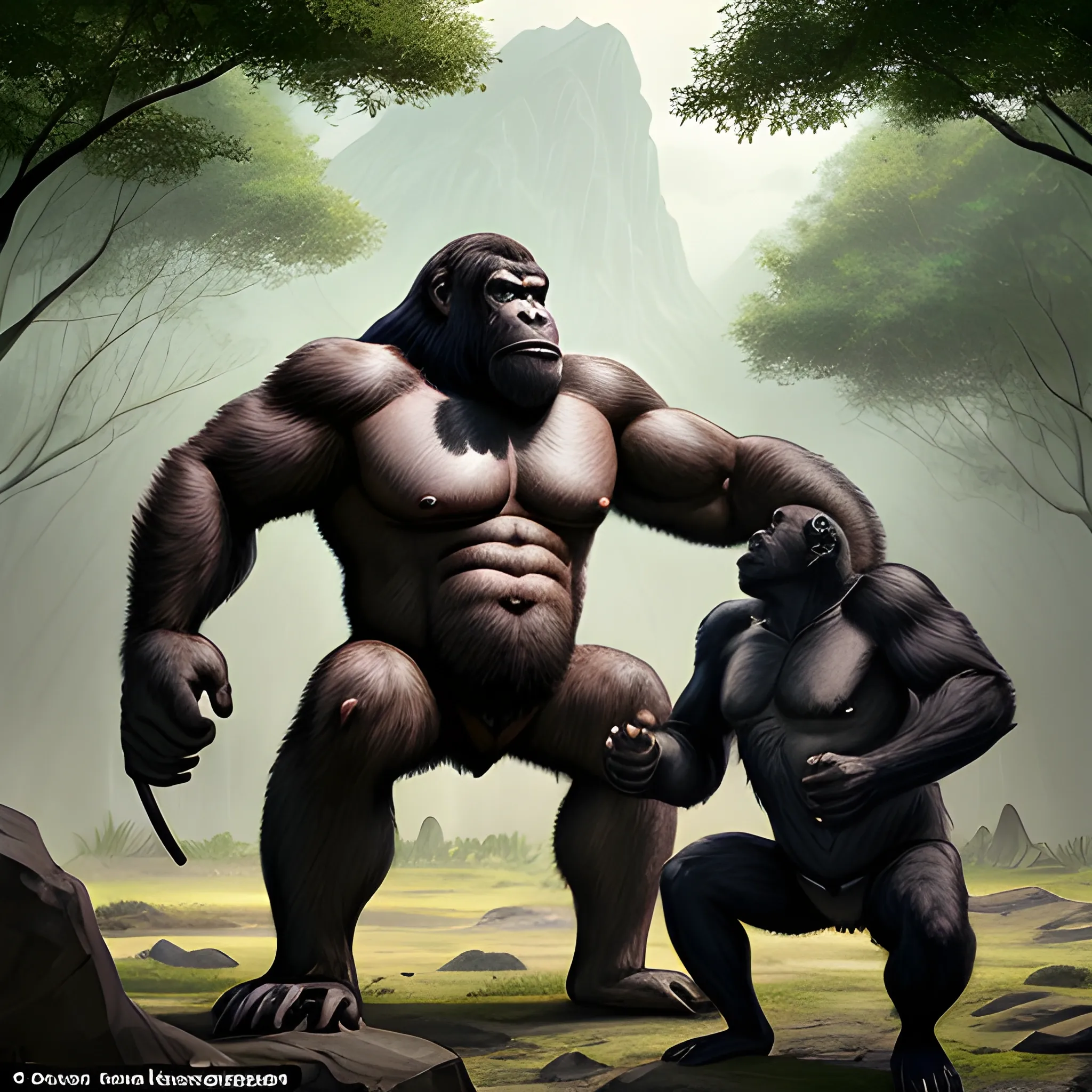
Appearance: The Strong-Looking Ape is a large and imposing primate , exuding raw strength and power in its every movement. It has a robust and muscular body covered in coarse , dark fur , which can range from black to deep brown or reddish hues. Its shoulders are broad and powerful , and its arms are long and muscular , capable of delivering devastating blows. The Strong-Looking Ape's face is expressive , with intelligent eyes that convey both curiosity and a hint of primal ferocity. Features: The Strong-Looking Ape is a formidable creature , possessing incredible physical strength and agility. Its powerful arms allow it to swing through trees with ease , making it a skilled climber and acrobat. In addition to its raw physical power , the Strong-Looking Ape's thick fur offers protection against environmental elements and minor injuries. Habitat: Strong-Looking Apes are typically found in dense jungles , vast forests , and remote mountainous regions. They are highly adaptable creatures , capable of surviving in a variety of environments. In your DND world , they might inhabit hidden valleys or ancient ruins , guarding sacred territories or serving as protectors of natural wonders. Behavior: While the Strong-Looking Ape is an intelligent creature , it primarily relies on its physical prowess to navigate its surroundings and interact with others. It lives in social groups or troops , exhibiting complex communication through vocalizations , body language , and gestures. While generally non-aggressive toward other creatures , the Strong-Looking Ape fiercely defends its territory and family from perceived threats. Role in the World: In your DND world , Strong-Looking Apes could be seen as noble creatures embodying the untamed spirit of nature. Druids and rangers might have a special connection with these primates , viewing them as symbols of strength , adaptability , and primal wisdom. Encountering a Strong-Looking Ape in the wild can be a captivating and potentially dangerous experience for adventurers. Players may witness the ape's impressive physical abilities as it swings effortlessly through the trees or engages in playful displays with other members of its troop. While generally non-aggressive , provoking or threatening a Strong-Looking Ape or its family could lead to a fierce defense , forcing players to use diplomacy or demonstrate respect for the creatures' territory. The presence of Strong-Looking Apes in your campaign adds an element of mystery and awe to the wilderness. Players might encounter these intelligent and powerful creatures during their explorations , offering opportunities for unique and memorable interactions. Strong-Looking Apes can serve as guardians of ancient sites , allies to druids seeking to protect the natural world , or even opponents in thrilling feats of strength and agility. Their presence in your DND world contributes to the rich tapestry of wildlife and brings a sense of wonder to the untamed corners of your campaign setting. ,
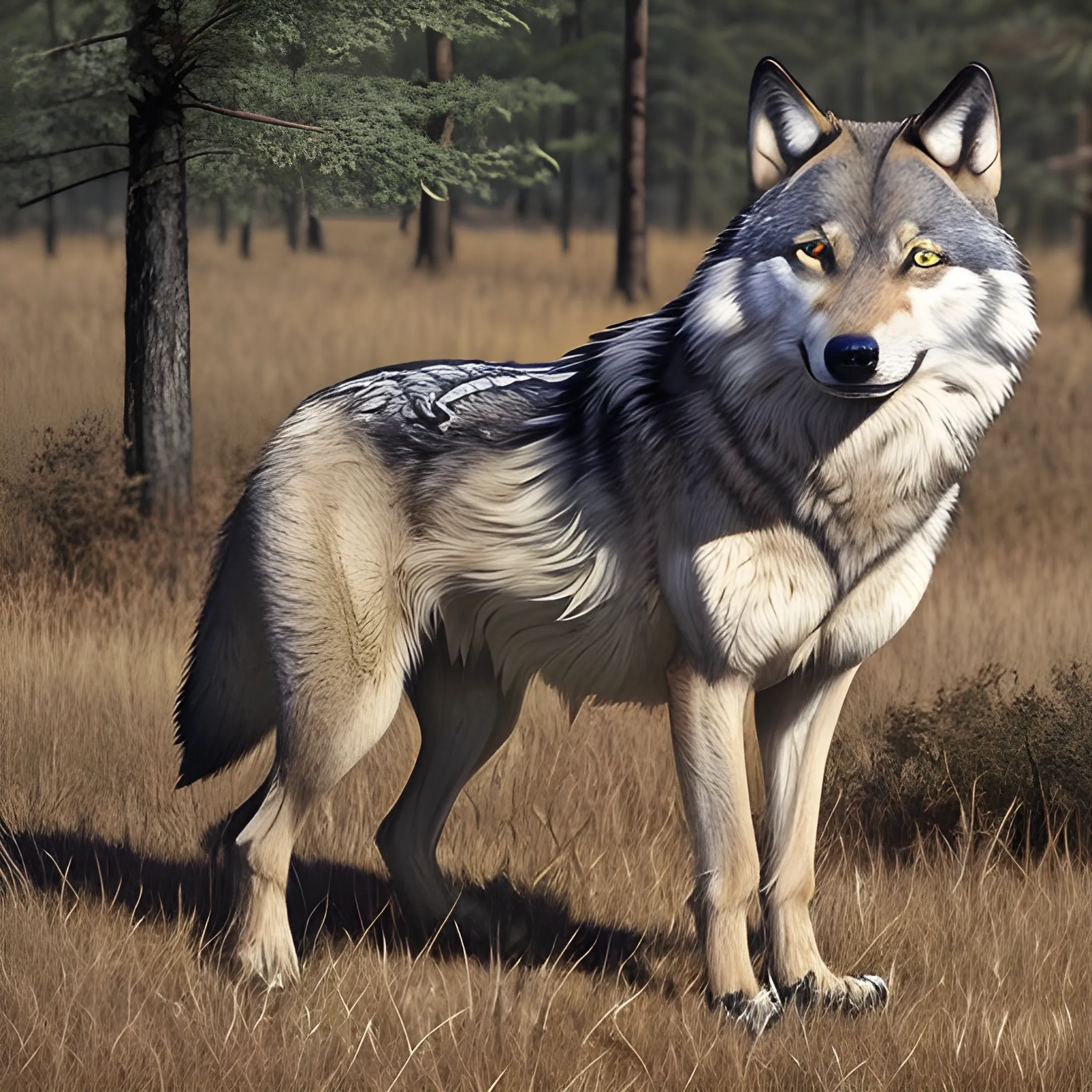
Appearance: The wolf is a majestic and intelligent creature that roams the untamed wilderness of your DND world. Wolves have a lean and muscular build , with a fur coat that can vary in color , including shades of gray , brown , black , and white. Their fur is usually thick and provides protection against harsh weather conditions. Adult wolves typically stand around 2 to 3 feet tall at the shoulder and can weigh between 60 to 150 pounds , with males being larger than females. Features: Wolves have keen senses , including exceptional hearing and a powerful sense of smell. Their sharp teeth and strong jaws are designed for hunting and consuming a wide range of prey. They have long legs , allowing them to cover great distances quickly when pursuing prey or patrolling their territory. Wolves' paws have well-developed pads , enabling them to move silently and skillfully through various terrains. Habitat: Wolves are highly adaptable creatures and can be found in a variety of habitats , including forests , grasslands , and tundra. They often inhabit remote and untouched regions , away from human settlements. In your DND world , they might roam vast stretches of wilderness or even be associated with specific forested areas. Behavior: Wolves are social animals , living in close-knit packs led by an alpha male and female. They exhibit strong family bonds , working together to hunt and protect their territory. In your DND world , packs of wolves might be seen as symbols of loyalty , teamwork , and the balance of nature. Lone wolves could also be encountered , either as solitary hunters or as outcasts from their original packs. Role in the World: In your DND world , wolves might play an essential role in the ecosystem , helping to control the populations of herbivores and maintaining a healthy balance in the natural environment. Druids and rangers might have a special connection with wolves , viewing them as guardians of the wild and emblems of freedom. Encountering wolves in the wild could present various opportunities for adventurers. They might have chances to peacefully observe wolves from a distance or use animal handling skills to communicate with them. In certain situations , adventurers could witness the social dynamics of a wolf pack or even be assisted by friendly wolves in their quests. However , engaging in combat with a pack of wolves could be a challenging encounter , as their coordinated attacks and pack mentality make them formidable predators. ,
